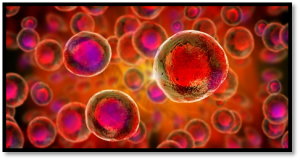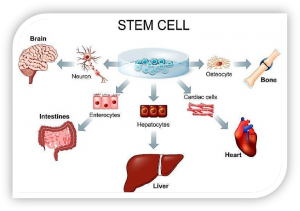- 15455 NW Greenbrier Parkway, Suite 130 Beaverton, OR - 97006
- PH: (503) 376-9200
- FAX: (503) 376-9201
- info@cornellpainclinic.com
Stem Cell Therapy
What is Stem Cell Therapy ?
Cells in the body have specific purposes, but stem cells are cells that do not yet have a specific role and can become almost any cell that is required.
Stem cells are undifferentiated cells that can turn into specific cells, as the body needs them. Theoretically Stem cell has unlimited potential to get differentiated into any type of cell, tissue or organ based on environmental cues.
Sources of Stem Cells ?
There are two main sources of Stem cells: Embryonic Stem cells and Adult body tissues
Embryonic Stem Cells
Adult Stem cells
Embryonic Stem Cells
At a very early stage of pregnancy, when sperm fertilizes an egg this leads to embryo formation.
Around 3 to 5 days after a sperm fertilizes an egg, the embryo takes the form of Blastocyst or ball of cells
This blastocyst, cell mass of 150-200 cells just before implantation into uterus or womb consist of two parts
Inner cell mass: that will develop into full human body
Outer cell mass: that will become part of placenta
Inner cell mass is where Embryonic stem cells are found, scientists call these cells as Totipotent cells. Totipotent cells refer to the fact that these cells have total potential to develop into any cell in the body.
Most of embryonic stem cells are derived from embryos that develop from egg fertilized in – vitro in an In-Vitro fertilization clinic- and then donated for research purposes with informed consent of donors. They are not derived from eggs fertilized in women’s body. Use of embryonic tissue for Stem cell therapy comes with its own problems, like tumor causing potential to ethical issues of using embryonic cells.
Adult Stem Cells
A person’s body contains stem cells throughout their life. The body can use these stem cells to repair or heal itself whenever needed.
Adult stem cells are also called tissue-specific or somatic stem cells, they exist throughout the body from the time an embryo develops to adult human being.
These adult stem cells have limited potential of growing into tissue specific cells, unlike embryonic stem cells which can grow into any cell or tissue of our body. They remain in their native tissue state until the body needs them for a specific purpose, such as skin or intestinal lining cells.
During normal everyday life, our body is constantly renewing its tissues. In some parts of the body, such as the gastric mucosa and bone marrow, stem cells regularly divide to produce new body cells and tissues for maintenance and repair.
Stem cells are present inside various types of tissues. Scientists have found stem cells more commonly in tissues, including:
 the brain
the brainbone marrow
Adipose tissue( fat )
the liver
blood and blood vessels
skeletal muscles
skin
However, stem cells can be difficult to isolate from normal cells from our body. They can stay non-dividing and non-specific for years until the body summons them to repair or grow new tissue.
Adult stem cells can divide or self-renew indefinitely. This means they can generate various cell types from the originating organ or even regenerate the original organ, entirely.
This division and regeneration is underlying mechanism how a skin wound heals, or how an organ such as the liver, can repair and regrow itself after damage.
In the past, scientists believed adult stem cells could only differentiate based on their tissue of origin. However, some evidence now suggests that they can differentiate to become other cell types as well, known as Multipotent Stem cells.
TYPES OF STEM CELLS

Through research for last several decades, Stem cells are categorized, depending upon the potential to grow into other type of cells.
Embryonic stem cells are most potent as they are the earliest cells in our human life with a potential to grow into any type of cell or tissue organ.
The full classification is as follows in descending order of their potency.
Totipotent stem cells: These stem cells can virtually grow into any possible cell or tissue. First few cells after fertilization of sperm and egg, known as zygote are Totipotent which divide and grow into full human body.
Pluripotent stem cells: These cells can grow into almost all possible cell types. These are derived from early embryo.
Multipotent stem cells: These stem cells can grow into closely related family of cells. Hematopoietic stem cells derived from bone marrow can grow into any blood cell type; red blood cells, white blood cells or platelets. During last few decades, use of Mesenchymal stem cells has evolved and found to significantly improve common sports, spine and musculoskeletal conditions. Mesenchymal stem cells can grow into closely related cartilage, bone or fat cells.
Oligopotent stem cells: these cells can differentiate into few cell types. Adult lymphoid or myeloid stem cells are Oligopotent
Unipotent stem cells: these stem cells can only grow into own cell type, these are still called stem cells as they can repair and renew themselves. Adult muscle stem cells are unipotent.
Potential uses of Stem Cells
Stem cells themselves do not serve any purpose but are important for several reasons.
Under right environment and conditions, they can renew, repair any type of cell in our body.
Hematopoietic stem cells (blood forming cells), through Bone marrow transplant has been used for Leukemia, Aplastic Anemia for last 40 year successfully
Stem cells have a potential to be lifesaving in diseases like Diabetes, Heart diseases, Spinal cord injury, Stroke, Burns.
Scientist see many other possible uses of stem cells but safety of these treatments, especially allogenic stem cell use is yet to be established through rigorous clinical trials.

